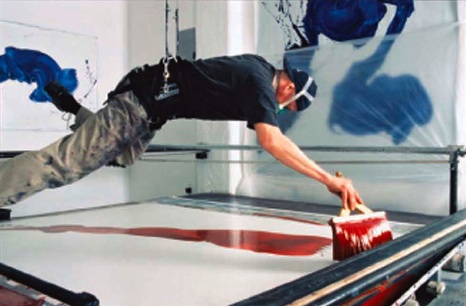Earlier this month I took advantage of a special rate and stayed at the Revel (rhymes with "bevel") taxpayer-supported hotel and casino complex in Atlantic City, NJ. (Hat tip to family member who was the perfect sardonic traveling companion.)
My first time in that city. What a mess.
It's easy to see why Atlantic City has so many problems, when you go there. It's truly remote from anywhere, cut off from the rest of the state by the Pine Barrens and miles of swampland. No major highway or north-south train line goes through. The town was rotting as a resort destination so the revitalization effort has been pegged to these enormous slick gambling complexes. Sealed enclaves that are meant to be worlds unto themselves, where you eat, swim, see shows, get massages, and of course gamble, without ever leaving the building until you are bled dry of funds and kicked out on the street to join Romney's 47%.
The Revel squats like the Death Star on a section of artificial beach (still under construction), cutting off the nearby houses and streets from easy access to the water and Boardwalk.
The city blocks "behind" it (invisible to hotel windows aligned for maximum waterfront views) are bleak neighborhoods of vacant lots, boarded up prairie gothic houses, and probably some of the cheapest-to-rent multiplex apartment units in America (due to ultimate impoverished scariness). Beautiful in a J.G. Ballard, what-has-become-of-our-cities way.
The Revel suites are luxurious, if sterile, and the view of the ocean from 17 stories up, looking out through heavy glass, is like being in a Michael Mann movie set on the planet Solaris.
Near the elevators I was amused to see framed artwork by James Nares and my former teacher, the post-Minimalist artist Robert Stackhouse.
A printed "amenities" menu in the hotel room advises you that if you want to take the Android tablet on the bedside phone, it can be had for $800.
Search Results for: james nares
paint effects at paint store
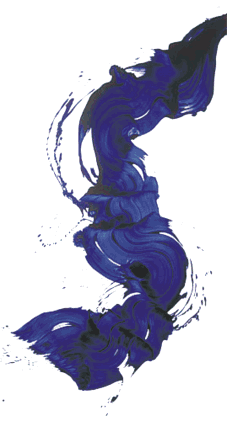
Speaking of James Nares, frankhats found this animated version of one of Nares' paintings on a paint store website in South Africa.
(In case it needs to be mentioned, Nares was part of the No Wave in NY and played guitar in an early line-up of the Contortions.)
digital abstract painting compared to poMo new york school painting
An intermittently entertaining, crowded, not-so-well compressed video from the collective Paintfx.biz appeared on Rhizome.org recently, without a word of critical commentary. Much of the still imagery on Paintfx suggests a glossier version of abstract illusionist painting from the '70s: a one-off borderline kitsch movement where the artists made swirly marks and then painted airbrushed shadows underneath them so they appeared to hover in an imaginary foreground space.
One might ask, what is the point of paintfx.biz? Is it a critique of painting (been there, done that), a critique of the assumptions of paint programs (barely investigated), or a cross-critique where the painting critique interrogates the paint program critique? None of the above, I think. Rather, the painters on the site seem to like painting and paint programs quite a bit! As one of them said, "We were popping huge boners off of juicy gestural marks and we thought it would be fun and easy to make a lot of those." De Kooning dutifully spins in his grave. Boners also seem to be popped over any effect that pointlessly bodies up brushstrokes with CGI. Surely all these effects can't be good.
The image below is a detail from a larger painting circulating on tumblr that may or may not be ultimately sourced to the blog Barriobajero.
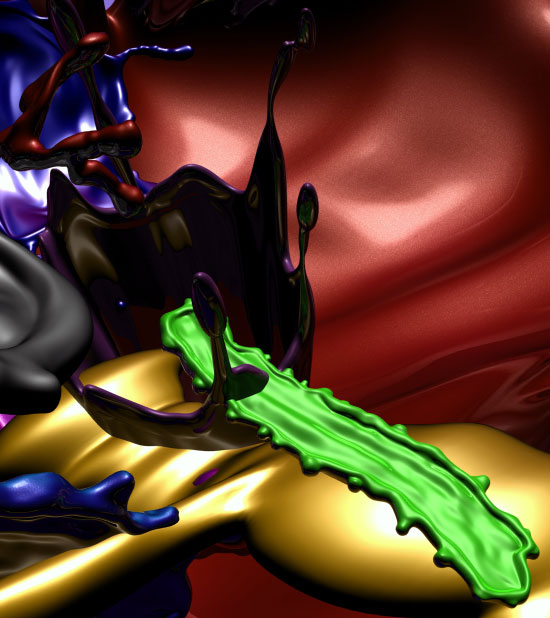
What we have here is an algorithm that models the flow of paint, based on variables of viscosity, air resistance, surface sheen, etc. and an artist working rigidly within the parameters of that paint program (which seems to imagine weightlessness in a deep three dimensional space). There is no stepping outside the box to break or question the programming. The result is that same "wow" you get when a new effect is introduced in a Hollywood movie. OK, show me the next effect. In Baudrillard terms the paint is "hyperrealized," carrying with it an implication of tawdry emptiness: like a bodybuilder impossibly bulked up on steroids. Whoever made the Barriobajero painting may be thinking in those terms, or may just think flinging the virtual paint around in three dimensions is "cool." In either case, the hint of polymorphous alien sexual abandon is counteracted by the frozen polish of the image.
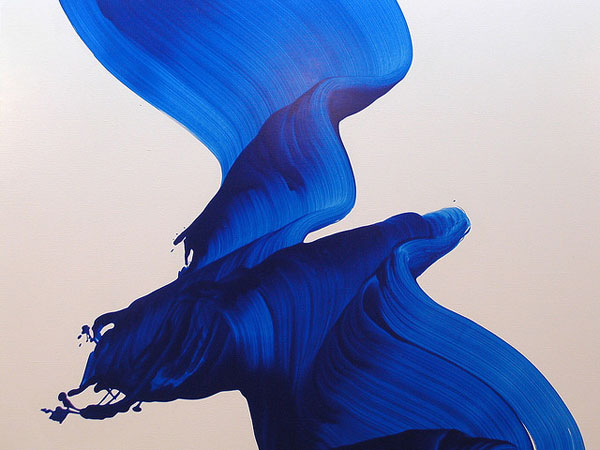
In the '80s and early '90s, beginning with the Neo Geo period, quite a bit of discourse came out of New York about hyperrealized, simulated painting. Essentially it was a way to keep painting in the galleries after its assumptions (the authenticity of the gesture, etc) had been critiqued to death in the '60s and '70s. A lot of this poMo abstraction was pretty good, and most of the painters didn't actually think painting was dead. Nevertheless, exaggerated, pumped up, highly artificial marks were a signature of this period. Above is a detail of a painting by James Nares. The slight transparency of the paint makes the brushstrokes appear three dimensional; every drip is treasured and fetishized in a way that would have been unthinkable to '50s painters. This is pre-digital FX painting, with the marks made in a single muscular stroke.
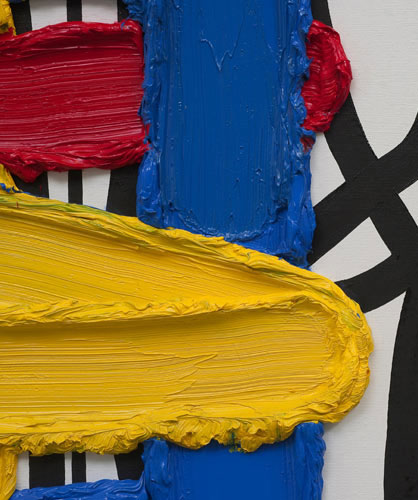
Jonathan Lasker also traffics in simulated, artificial-looking abstraction, though he has said he would rather make "the first new painting" than history's last. He applies his thick, vaguely Plasticine-textured
pigment with monomaniacal, almost childlike deliberation--these slabs of ooze don't need airbrushed shadows, they cast their own. Above is a detail found via Google Images.
All the above images are digital, of course--jpegs--simulations of simulations. But the question is, if New York School painting was already in the nth state of critique, what is added by taking the critique online or "virtualizing" it? Does it reinvigorate painting by introducing new problems to be solved? Is it like computer modeling used to study weather patterns or subatomic particles, to find out if painting can fail or succeed on a material level? Is it a critique of the role of photography in representing paintings, taking "retouching" to preposterous extremes via Photoshop? All of that begs the question: If you can make anything with a computer, why model paint, as opposed to say, germanium? Why the continued attachment to this art of the cave era?
Painting Impossible
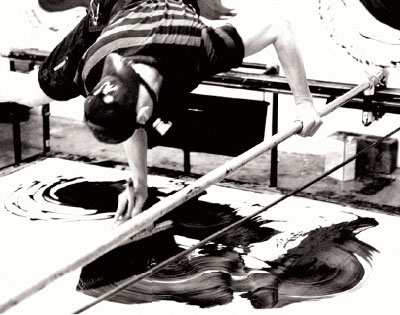
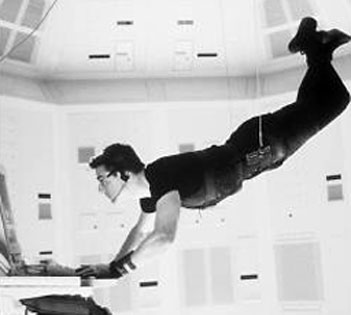
These pics probably look better placed side by side but you get the idea: there's something inherently sexy about a suspended guy working. Top: James Nares; bottom: that bad actor.
Someone should do a James Nares/David Reed battle exhibition. Who does the best zen swirly brush stroke of death?
Nares has it goin' on with the backwards baseball cap, gas mask, and No Wave roots. Reed upped his hipness cred a while back, though, by digitally retro-compositing one of his paintings into the background of an episode of the 1986-88 TV series Crime Story.
Cruise mostly just poses, though some consider him a painter of film.
Update: Tom Cruise vs Maude Lebowsky (hat tip shm)

